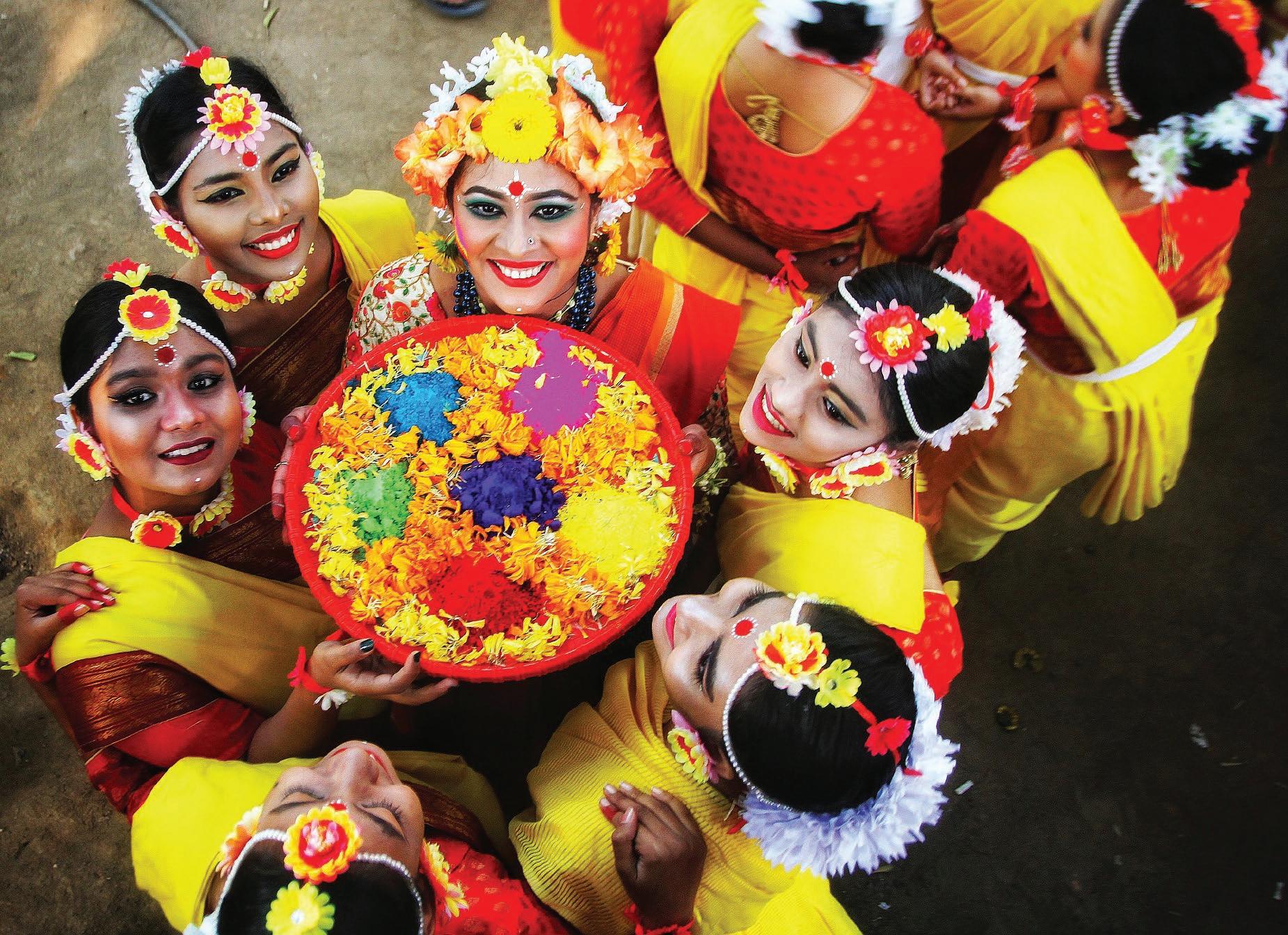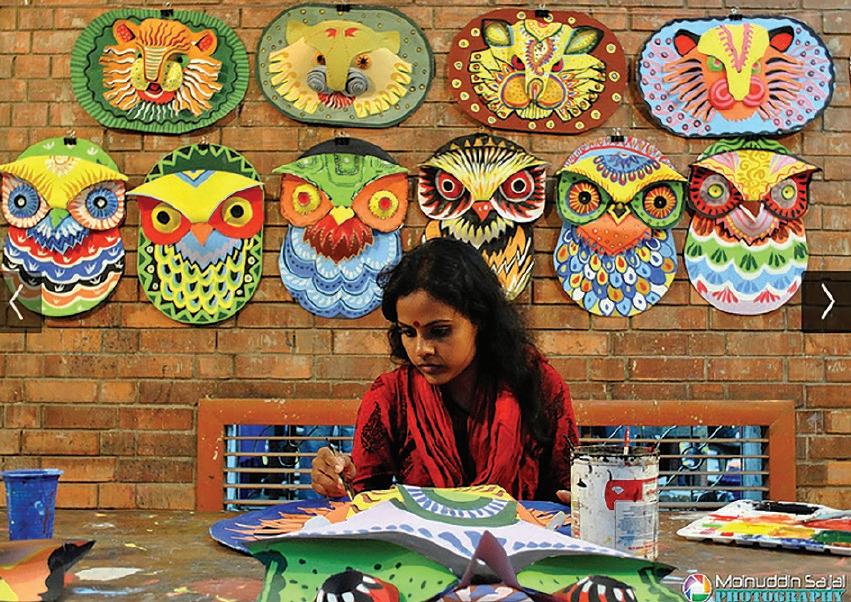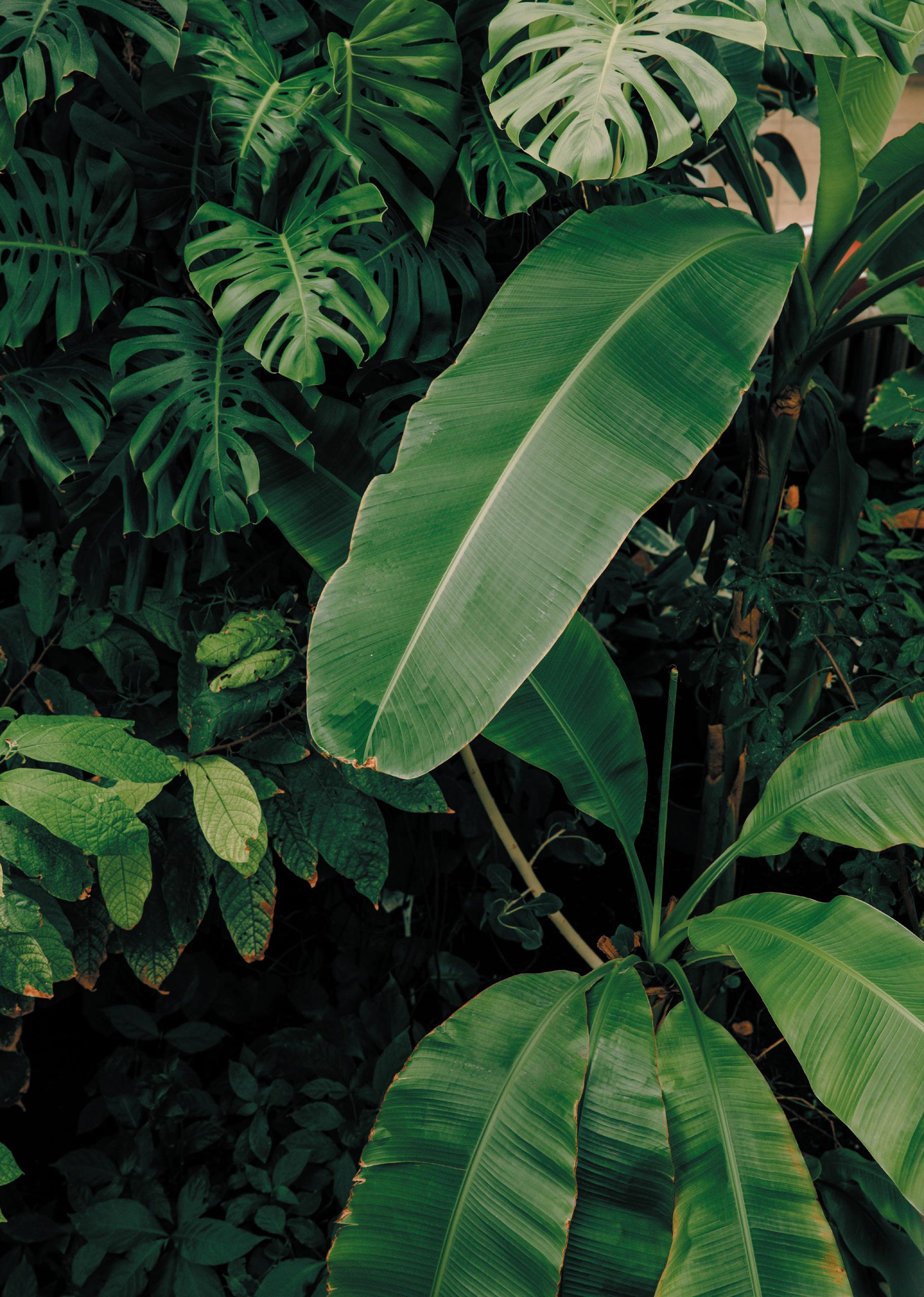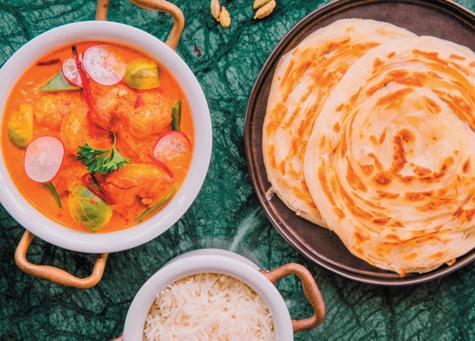
1 minute read
Pohela Boishakh
Bangali New Year Friday 15th April
Pohela Boishakh is one of Bengal’s most loved festivals. Bengalis and some Indians celebrate this festival irrespective of cultural or religious differences. White and red saris, panjabis and uttorios are happily worn by everyone taking part in Boishakhi rallies and fairs and feasting on hilsha and panta bhat. Men and women of all ages have revelled in this event for decades.
In Bangladesh, many cultural festivals are celebrated with local handicrafts and Pohela Boishakh is no exception. The mask is an object worn over or in front of the face to hide the identity of a person and by its own features to establish another being. This essential characteristic of hiding and revealing personalities or moods is common to all masks.
As cultural objects they have been used throughout the world in all periods and have been as varied in appearance as in their use and symbolism. Masks have been designed in innumerable varieties, from the simplest of crude “False Faces” held by a handle to complete head coverings with ingenious movable parts and hidden faces.
The use of masks in rituals or ceremonies is a very ancient human practice across the world, although masks can also be worn for protection, in hunting, in sports, in feasts or in wars or simply used as ornamentation. Some ceremonial or decorative masks were not designed to be worn. Although the religious use of masks has waned, they are used sometimes in drama therapy or psychotherapy. Masks have an intimate relationship with dance and acting, along with various religious customs, rituals and festivals throughout the World.















